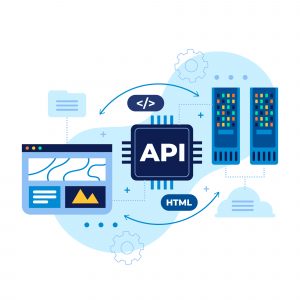React Native empowers developers to build mobile apps using a single codebase across iOS and Android. While it greatly accelerates development speed, achieving native-level performance requires a deeper understanding of how it works under the hood. Poorly optimized apps can suffer from slow UI transitions, unresponsive gestures, memory leaks, and high CPU usage, which can significantly degrade the user experience. This blog unpacks these concerns, helping you build functional, smooth, and efficient apps.
The Inner Workings of React Native
Understanding the core of React Native is crucial. It operates on a bridge architecture that connects JavaScript code to native modules. This architecture revolves around three main threads: the JavaScript thread, which handles application logic and interactions; the UI thread, responsible for layout and rendering; and the native modules thread, which manages lower-level functionalities, such as accessing the camera or file system. This knowledge empowers you to make informed decisions and take control of your app’s performance.
React Native leverages React’s component-based design to describe UI elements declaratively. However, unlike React for the web, React Native translates these components into native views rather than HTML DOM elements. This bridge-based approach provides flexibility but can be a bottleneck if not managed efficiently, particularly in scenarios involving frequent interactions or complex rendering logic.
The React Native Runtime Explained
The runtime in React Native serves as the environment where JavaScript executes, often powered by engines like JavaScriptCore or Hermes. Here, user interactions are processed, component logic is executed, and communication with the native side takes place.
When a component’s state changes, React Native calculates the difference using a virtual DOM and schedules minimal updates to the UI. These updates are dispatched through the bridge to the native side. The asynchronous nature of this bridge ensures smooth execution; however, frequent and excessive bridge calls can significantly slow things down. Understanding this communication model is crucial for any serious performance optimization effort.
How React Native Renders UI
React Native converts component structures into native UI views via “reconciliation.” When a component renders, React computes what has changed since the last render and efficiently updates only those specific UI elements. This happens through the shadow tree and layout engine, which determine positions and hierarchy before painting the UI on screen.
However, poorly structured components, improper use of state, or unnecessary updates can overwhelm the JavaScript thread, leading to frame drops and lag. Performance tuning begins with understanding how renders are triggered and how to minimize unnecessary work.
Identifying and Diagnosing Bottlenecks
Accurate diagnosis is the first step to solving any problem, and it’s no different when it comes to performance issues in React Native apps. Bottlenecks often stem from excessive rendering, complex navigation stacks, heavy animations, or poor state management. You can confidently implement the right solutions and improve your app’s performance by accurately identifying these issues.
If animations feel sluggish, the UI thread is likely blocked. If user interactions are delayed, the JavaScript thread may be overloaded. Memory leaks, meanwhile, tend to degrade performance over time. These symptoms often go unnoticed during development but manifest prominently in production, especially on lower-end devices.
Tools to Analyze Performance
React Native provides a solid ecosystem of performance analysis tools. The React Native Debugger allows developers to inspect Redux states and component re-renders. Facebook’s mobile app debugger Flipper includes plugins for network inspection, layout tracking, and performance visualization.
For native profiling, Xcode Instruments and Android Profiler help diagnose issues like high memory usage or slow frame rendering. Chrome’s DevTools can be used to profile JavaScript execution. Each tool offers insights that, when interpreted correctly, precisely guide optimization decisions.
Recognizing Red Flags in App Behavior
Several indicators suggest underlying performance issues. If animations stutter or navigation takes too long, the UI thread or JavaScript thread may be overloaded, resulting in issues. Unusually high memory usage may indicate memory leaks, which are often caused by retaining unused references or failing to clean up listeners. Prolonged CPU spikes may suggest inefficient code execution or repeated expensive operations.
The key is consistently monitoring the app’s behavior in real user conditions, especially on devices with average or low processing capabilities, where performance issues are most likely to surface.
Common Performance Killers and How to Fix Them
Excessive Re-renders
Frequent re-rendering of components, especially when their props or states haven’t changed, can choke the JavaScript thread. This issue typically arises from anonymous inline functions, deeply nested components, or shared state updates that affect multiple app parts. Using React. Memo, useMemo, and useCallback can effectively minimize unnecessary re-renders. Structuring components to handle only relevant state updates also helps maintain performance.
Unoptimized List Rendering
Lists are central to mobile apps, but rendering long lists without optimization severely impacts performance. Instead of ScrollView, which renders all elements at once, using FlatList or SectionList ensures items are rendered only as needed. Properly supplying keys and defining item layout dimensions with getItemLayout can enhance rendering efficiency.
Inefficient Image Handling
Large, uncompressed images increase memory usage and slow down loading times. Optimizing image sizes before importing them into the app and leveraging libraries like react-native-fast-image for caching and lazy loading can help manage memory and reduce render delays. Avoid inline base64 images and prefer network-hosted or bundled assets with size constraints.
Bloated Navigation and Transitions
Complex navigation flows with heavy animations can affect user experience. Lighter navigators and avoiding deep nesting ensure better performance. Navigation libraries like React Navigation offer lazy screen loading and lightweight stack management features. Transitions should be handled using native drivers to offload animation execution from JavaScript to the native side.
Code-Level Optimization Techniques
State Management Strategy
Poorly designed state logic causes unwanted renders and increased complexity. Managing global and local state appropriately—perhaps using Redux for international data and React’s local state for component-level logic—ensures lean updates. Avoid unnecessary deep nesting in Redux state trees; normalized data structures are preferred.
Reducing Bridge Communication
Bridging should be treated as a limited resource. Sending frequent messages over the bridge can cause lag, especially when payloads are large. Minimizing the number and size of these communications, such as combining multiple updates or processing data natively, can dramatically boost performance. Expensive operations, such as data parsing or media manipulation, should be handled natively whenever possible.
Lazy Loading and Code Splitting
To avoid long startup times, load only what’s needed initially. Using React.lazy() and Suspense, lazy loading components enable better initial load performance. Bundling code into smaller chunks and loading them on demand—especially for rarely used screens or features—reduces memory overhead and improves responsiveness.
Leveraging Native Features for Better Performance
Enabling Hermes Engine
Hermes is an open-source JavaScript engine developed by Meta specifically for React Native. Enabling Hermes reduces memory usage, improves app startup time, and allows ahead-of-time compilation. It also provides better garbage collection and smaller bundle sizes, translating into snappier user experiences. Enabling Hermes is as simple as updating your project’s configuration file, though compatibility testing with third-party packages is essential.
Writing Custom Native Modules
Sometimes JavaScript isn’t enough, especially for high-performance use cases like video processing, encryption, or complex gesture recognition. Writing custom native modules in Java (Android) or Objective-C/Swift (iOS) enables faster execution and reduces bridge dependency. These modules can be invoked as needed, leveraging each platform’s native capabilities without overloading the JavaScript thread.
App Size and Startup Time Optimization
Reducing the app binary size leads to faster installations and better startup performance. Removing unused dependencies, stripping out dead code, compressing image assets, and enabling tools like Proguard (Android) or Bitcode (iOS) contribute to leaner builds. Breaking the app into smaller, load-on-demand modules ensures only necessary resources are loaded at startup, optimizing the time-to-interaction metric.
Conclusion
Mastering performance optimization in React Native isn’t about a single fix—it’s a series of mindful decisions. From reducing re-renders and optimizing lists to leveraging native features and tools like Hermes, every optimization has a measurable impact. A performant React Native app offers speed, stability, and scalability, resulting in improved user retention and higher ratings.
Whether you’re building a small prototype or a large-scale commercial app, taking the time to understand and implement these strategies will ensure that your React Native app stands out for its features and smooth, responsive performance.




